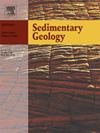波浪主导和波浪影响的滨面矿床层序地层学:体系域、地层面和相接触
IF 2.9
2区 地球科学
Q1 GEOLOGY
引用次数: 0
摘要
滨面沉积通常与高能沉积构造以及可能具有层序地层学或沉积学意义的波浪和洋流所产生的侵蚀面有关。与滨面沉积相关的典型层序地层面有:冲蚀面(RS)、最大洪泛面(MFS)、强迫退退底面(BSFR)、海蚀退退面(RSME)、陆上不整合面(SU)和相关整合面(CC)。然而,其中一些表面,如MFS、BSFR和CC可能是神秘的,难以在露头和岩心中精确定位。滨面相接触由局部泛洪面(LFS)、下覆面(DLS)、逆冲面(SD)和层状边界(BB)代表,通常很容易识别。滨面沉积可形成各种下游控制体系域,包括低水位体系域(LST)、海侵体系域(TST)、高水位体系域(HST)和降级体系域(FSST)。在这些系统域中,TSTs和HSTs是最常见的。在这些环境中,由于BSFR和CC在全岸面序列中的物理表现更为微妙,因此区分hst、fsst和lst是一个挑战。层序地层面和相接触可根据沉积学、工艺学、成岩学、矿物学、地球物理和微古生物学等几种标准进行识别。由于其易于被各种资料识别,因此通常选择RSs作为由滨面或混合滨陆架沉积组成的层序的边界,通常称为海侵-退(T-R)层序。本文章由计算机程序翻译,如有差异,请以英文原文为准。
Sequence stratigraphy of wave-dominated and wave-influenced shoreface deposits: Systems tracts, stratigraphic surfaces and facies contacts
Shoreface deposits are usually associated with high-energy sedimentary structures, as well as with erosional surfaces produced by waves and currents that may have sequence stratigraphic or sedimentological significance. Typical sequence stratigraphic surfaces associated with shoreface deposits are the ravinement surface (RS), the maximum flooding surface (MFS), the basal surface of forced regression (BSFR), the regressive surface of marine erosion (RSME), the subaerial unconformity (SU) and the correlative conformity (CC). However, some of these surfaces, such as the MFS, the BSFR and the CC can be cryptic and difficult to pinpoint in outcrops and cores. Facies contacts in the shoreface are represented by the local flooding surface (LFS), the downlap surface (DLS), the surf diastem (SD) and bedset boundaries (BB), which are usually well recognizable. All downstream-controlled systems tracts may form in shoreface deposits, including the lowstand systems tract (LST), transgressive systems tract (TST), highstand systems tract (HST) and falling-stage systems tract (FSST). Among these systems tracts, TSTs and HSTs are most commonly recognized. A challenge in these settings is the distinction between HSTs, FSSTs and LSTs, due to the more subtle physical expression of the BSFR and the CC in fully shoreface successions. Sequence stratigraphic surfaces and facies contacts can be identified on the basis of several criteria, including sedimentological, ichnological, diagenetic, mineralogic, geophysical, and micropaleontological. Due to their easy recognition with all kinds of data, RSs are commonly chosen as boundaries of stratigraphic sequences composed of shoreface or mixed shoreface-shelf deposits, commonly referred to as transgressive-regressive (T-R) sequences.
求助全文
通过发布文献求助,成功后即可免费获取论文全文。
去求助
来源期刊

Sedimentary Geology
地学-地质学
CiteScore
5.10
自引率
7.10%
发文量
133
审稿时长
32 days
期刊介绍:
Sedimentary Geology is a journal that rapidly publishes high quality, original research and review papers that cover all aspects of sediments and sedimentary rocks at all spatial and temporal scales. Submitted papers must make a significant contribution to the field of study and must place the research in a broad context, so that it is of interest to the diverse, international readership of the journal. Papers that are largely descriptive in nature, of limited scope or local geographical significance, or based on limited data will not be considered for publication.
 求助内容:
求助内容: 应助结果提醒方式:
应助结果提醒方式:


